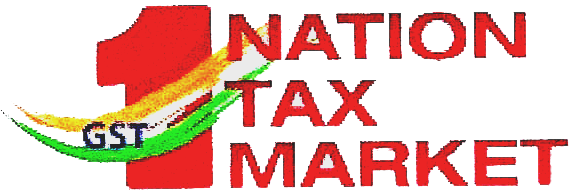About GST
Salient Features
- GST would be applicable on “supply” of goods or services as against the present concept of tax on the manufacture of goods or on sale of goods or on provision of services.
- GST would be based on the principle of destination based consumption taxation as against the present principle of origin based taxation.
- It would be a dual GST with the Centre and the States simultaneously levying it on a common base. The GST to be levied by the Centre would be called Central GST (CGST) and that to be levied by the States [including Union territories with legislature] would be called State GST (SGST) . Union territories without legislature would levy Union territory GST (UTGST) .
- An Integrate d GST (IGST) would be levied on inter - State supply (including stock transfers) of goods or services. This would be collected by the Centre so that the credit chain is not disrupted.
- Import of goods would be treated as inter - State supplies and would be subject to IGST in addition to the applicable customs duties.
- Import of services would be treated as inter - State supplies and would be subject to IGST.
- CGST, SGST /UTGST & IGST would be levied at rates to be mutually agreed upon by the Centre and the States under the aegis of the GSTC.
- GST would replace the following taxes currently levied and collected by the Centre:
- a) Central Excise D uty ;
- b) Duties of Excise (Medicinal and Toilet Preparations) ;
- c) Additional Duties of Excise (Goods of Special Importance) ;
- d) Additional Duties of Excise (Textiles and Textile Products) ;
- e) Additional Duties of Customs (commonly known as CVD) ;
- f) Special Additional Duty of Customs (SAD) ;
- g) Service Tax ;
- h) Cesses and surcharges insofar as they relate to supply of goods or services.
- State taxes that would be subsumed within the GST are:
- a) State VAT ;
- b) Central Sales Tax ;
- c) Purchase Tax ;
- d) Luxury Tax ;
- e) Entry Tax (All forms) ;
- f) Entertainment Tax (except those levied by the local bodies) ;
- g) Taxes on a dvertisements ;
- h) Taxes on lotteries, betting and gambling ;
- i) State cesses and surcharges insofar as they relate to supply of goods or services.
- GST would apply to all goods and services except Alcohol for human consumption.
- GST on five specified petroleum products (Crude, Petrol, Diesel, ATF & Natural gas) would be applicable from a date to be recommended by the GSTC.
- Tobacco and tobacco products would be subject to GST. In addition, the Centre would continue to levy Central Excise duty.
- A common threshold exemption would apply to both CGST and SGST. Taxpayers with a n annual turnover of Rs. 20 la kh (Rs. 10 la kh for special category States as specified in article 279A of the Constitution ) would be exempt from GST. A compounding option (i.e. to pay tax at a flat rate without credits) would be available to small taxpayers ( including to specified category of m anufacturers and service providers) having a n annual turnover of up to Rs. 50 la kh . The threshold exemption and compounding scheme would be optional.
- The list of exempted goods and services would be kept to a minimum and it would be harmonized for the Centre and the States as well as across States as far as possible.
- Exports would be zero - rated.
- Credit of CGST paid on inputs may be used only for paying CGST on the output and the credit of SGST/UTGST paid on inputs may be used only for paying SGST/UTGST. In other words, the two streams of input tax credit (ITC) cannot be cross utilized, except in specified circumstances of inter - State supplies for payment of IGST. The credit would be permitted to be utilized i n the following manner:
- a) ITC of CGST allowed for payment of CGST & IGST in that order;
- b) ITC of SGST allowed for payment of SGST & IGST in that order;
- c) ITC of UTGST allowed for payment of UTGST & IGST in that order;
- d) ITC of IGST allowed for payment of IGST, CGST & SGST/UTGST in that order. ITC of CGST cannot be used for payment of SGST/UTGST and vice versa.
- Accounts would be settled periodically between the Centre and the State to ensure that the credit of SGST used for payment of IGST is transferred by the o riginating State to the Centre. Similarly the IGST used for payment of SGST would be transferred by Centre to the destination State. Further the SGST portion of IGST collected on B2C supplies would also be transferred by Centre to the destination State. Th e transfer of funds would be carried out on the basis of information contained in the returns filed by the taxpayers.
- Input Tax Credit (ITC) to be broad based by making it available in respect of taxes paid on any supply of goods or services or both used o r intended to be used in the course or furtherance of business.
- Electronic filing of returns by different class of persons at different cut - off dates .
- Various modes of payment of tax available to the taxpayer including internet banking, debit/ credit card and National Electronic Funds Transfer (NEFT) / Real Time Gross Settlement (RTGS) .
- Obligation on certain persons including government departments, local authorities and government agencies, who are recipients of supply, to deduct tax at the rate of 1% from the payment made or credited to the supplier where total value of supply, under a contract, exceeds two lakh and fifty thousand rupees .
- Refund of tax to be sought by taxpayer or by any other person who has borne the incidence of tax within two years from the relevant date .
- Obligation on electronic commerce operators to collect ‘tax at source’, at such rate not exceeding two per cent. (2 %) of net value of taxable supplies, out of payments to suppliers supplying goods or services through their portals .
- System of self - assessment of the taxes payable by the registered person .
- A udit of registered persons to be conducted in order to verify compliance with the provisions of Act .
- Limitation period for raising demand is three (3) years from the due date of filing of annual return or from the date of erroneous refund for raising demand for short - payment or non - payment of tax or erroneous refund and its adjudication in normal cases .
- Limitation period for raising demand is f ive (5) years from the due date of filing of annual return or from the date of erroneous refund for raising demand for short - payment or non - payment of tax or erroneous refund and its adjudication in case of fraud, suppression or willful mis - statement.
- Arre ars of tax to be recovered using various modes including detaining and sale of goods, movable and immovable property of defaulting taxable person .
- Officers would have restrictive powers of inspect ion, search, seizure and arrest.
- Goods and Services Tax Appe llate Tribunal would be constituted by the Central Government for hearing appeals against the orders passed by the Appellate Authority or the Revisional Authority . States would adopt the provisions relating to Tribunal in respective SGST Act.
- Provision for penalties for contravention of the provision of the proposed legislation has been made.
- Advance Ruling Authority would be constituted by States in order to enable the taxpayer to seek a binding clarity on taxation matters from the department . Centre would adopt such authority under CGST Act.
- An anti - profiteering clause has been provided in order to ensure that business passes on the benefit of reduced tax incidence on goods or services or both to the consumere.
- Elaborate transitional provisions have been p rovided for smooth transition of existing taxpayers to GST regime.


